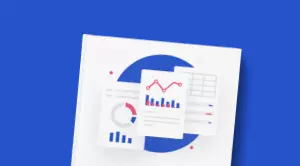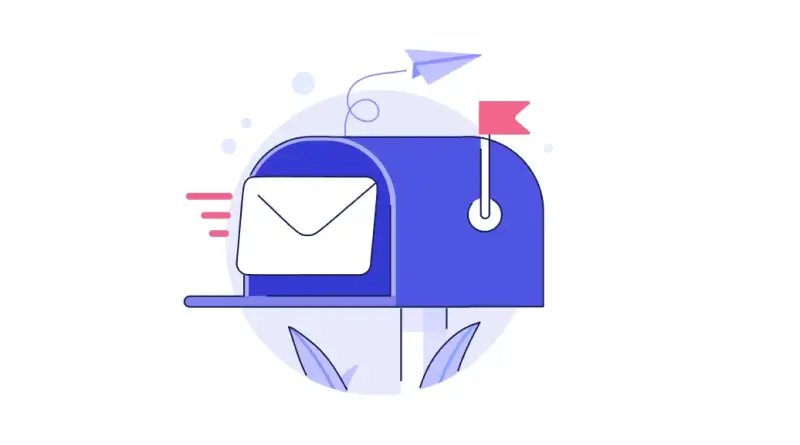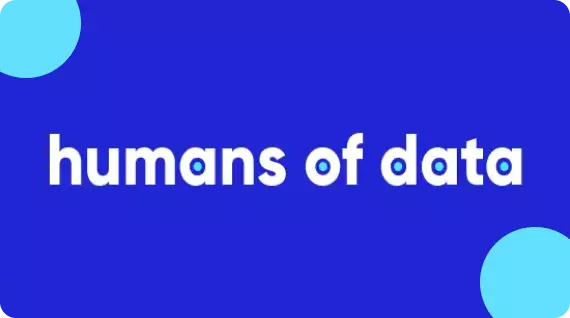Data Classification: Definition, Types, Examples, Tools & More!

Share this article
Ever wondered how your sensitive data is organized and safeguarded? Data classification tackles the chaos by categorizing based on sensitivity, preventing breaches and ensuring confidentiality.
Without it, are you willing to risk data breaches, compliance lapses, and compromised privacy? Proper classification is the key to secure handling, storage, and meeting regulatory standards.
Modern data problems require modern solutions - Try Atlan, the data catalog of choice for forward-looking data teams! 👉 Book your demo today
In this article, we will delve deep into what data classification actually is, exploring its benefits, types, tools, and more.
Ready? Let’s begin!
Table of contents #
- What is data classification?
- 5 Key benefits of data classification
- 4 Main types of data classification
- 3 Common methods of data classification
- Data classification standards and policies
- 5 Data classification challenges
- Top 5 Data classification tools for you
- How to implement data classification in organizations
- To summarize
- What is data classification: Related articles
What is data classification? #
Data classification is a process used in information technology and data management to categorize data so that it can be used and protected more effectively. It involves assigning a level of sensitivity to different types of data, based on the potential impact to an organization or individual if that data were accessed, altered, or lost.
For example, certain data might be personal or sensitive, requiring strict handling due to privacy concerns, while other data might be less sensitive and thus subject to fewer restrictions. This process not only involves the identification and labeling of data but also requires understanding the implications of different data types, including how their exposure or misuse could impact the organization or individuals.
By classifying data, organizations can prioritize their security resources, comply with legal and regulatory requirements, and optimize their data management strategies. The main goal of this process is to assess and determine how different types of data should be handled, stored, and protected.
In other words, it is to ensure that data is used effectively and responsibly, balancing the need for accessibility and usability with the imperative of security and compliance.
5 Key benefits of data classification #
Data classification is a critical process in managing and protecting an organization’s data. It brings numerous benefits, from enhancing security to ensuring compliance with various regulations.
Here are five key benefits of data classification:
- Improved data security
- Enhanced compliance with regulations
- Efficient data management
- Risk management and mitigation
- Increased awareness and responsibility
Let’s understand each benefit in detail.
1. Improved data security #
By classifying data, organizations can determine which data is most sensitive and requires the highest level of protection. This allows them to apply robust security measures like encryption and access controls specifically to the data that needs it most, reducing the risk of data breaches and unauthorized access.
This targeted approach to security is more effective and efficient than applying the same level of security to all data indiscriminately.
2. Enhanced compliance with regulations #
Many industries are subject to regulations that dictate how certain types of data must be handled. Data classification helps organizations identify which data falls under these regulations and ensure they are complying with legal standards.
This is particularly important for sensitive data like personal health information or financial records, which are often subject to stringent privacy laws.
3. Efficient data management #
Classifying data streamlines data management by organizing data according to its importance and sensitivity.
This organization makes it easier to locate and retrieve data when needed, improving operational efficiency. It also assists in data retention policies, ensuring that data is not kept longer than necessary, thereby reducing storage costs and simplifying data management.
4. Risk management and mitigation #
Data classification plays a vital role in risk management by identifying which data is most valuable and at risk.
With this knowledge, organizations can prioritize their resources and focus their risk mitigation strategies on the most critical data, reducing the potential impact of data-related incidents.
5. Increased awareness and responsibility #
When data is clearly classified, it raises awareness among employees about the different types of data they handle and the corresponding security protocols. This heightened awareness fosters a culture of responsibility and security, as employees are more likely to follow best practices for handling sensitive information.
In summary, data classification not only enhances the security and efficiency of data handling but also ensures regulatory compliance, aids in risk management, and cultivates a more security-conscious organizational culture. These benefits are essential for any organization looking to safeguard its data in today’s digital landscape.
4 Main types of data classification #
Data classification is typically divided into several types, each tailored to the specific needs and risks associated with the data. These types help organizations in managing data security, compliance, and accessibility.
Here are four main types of data classification:
- Public
- Internal
- Confidential
- Restricted
Let’s understand each example sequentially.
1. Public #
Public data is information that can be freely accessed and distributed without any risk of harm to the organization or individuals. This type typically includes information that is already in the public domain or intended for public dissemination, such as press releases, job postings, or marketing materials.
The main focus with public data is on ensuring its accuracy and integrity, rather than its security.
2. Internal #
Internal data is information that is not sensitive but is intended for use within the organization. This might include internal policies, training materials, or certain types of operational data.
While the unauthorized disclosure of internal data is not likely to cause significant harm, it’s still managed with a basic level of security to maintain organizational privacy and efficiency.
3. Confidential #
Confidential data is sensitive information that could cause harm or provide unfair advantage if disclosed. This category often includes trade secrets, customer information, and certain financial records.
Access to confidential data is typically restricted within the organization to those with a legitimate need to know, and it is protected with higher security measures, such as encryption and strict access controls.
4. Restricted #
Restricted data is the most sensitive category, requiring the highest level of security. This type of data could cause significant harm or legal issues if accessed by unauthorized persons.
Examples include personally identifiable information (PII), health records, or sensitive government data. Organizations handling restricted data must adhere to strict regulatory and compliance requirements, employing advanced security measures and strict access controls to safeguard this information.
In short, these data classification types allow organizations to allocate their security resources effectively, ensuring that each type of data is protected in accordance with its sensitivity and the potential impact of its compromise.
3 Common methods of data classification #
When it comes to sorting and securing your company’s information, there are a few ways to go about it. Think of data classification as organizing your business files into different cabinets for easy access and protection. Let’s explore the main ways you can do this:
- Manual data classification
- Automated data classification
- Hybrid approaches
Let us understand these methods in brief.
1. Manual data classification #
Manual classification is like sorting through your papers and deciding where they should go based on what they contain. It requires someone to look at each piece of information and decide how sensitive it is. If a document has personal details about customers, it might be marked as confidential.
This method gives a personal touch and can be very accurate since it relies on human judgment. However, it can take a lot of time, especially if your business has tons of data to go through. It’s also possible for mistakes to happen because, well, we’re all human.
2. Automated data classification #
Automated classification uses software to scan through your data and organize it. It’s like having a super-smart assistant who can quickly file everything correctly without getting tired. This method is fast and can handle a lot of data at once.
The software can look for certain words or patterns that help it decide how sensitive the data is. For example, it can identify and protect any document that contains a credit card number. The downside? It might not catch everything since it follows a set of rules and doesn’t understand context as we do.
3. Hybrid approaches #
A hybrid approach combines the best of both worlds. Here, you’d use software to sort through the bulk of your data, but you’d also have people check over the results or make decisions on the trickier cases.
It’s like having a machine do the heavy lifting while a skilled worker does the fine-tuning. This method can save time and reduce errors, making sure that your data is sorted accurately and efficiently.
How you classify your data will depend on the size of your business, the type of information you handle, and how much time and resources you have. Each method has its benefits, but the most important thing is that you do classify your data. It helps keep your business’s information safe and well-organized, which is key to operating smoothly and maintaining your customers’ trust.
Data classification standards and policies #
When you’re running a business, it’s crucial to keep your information organized and safe. Think of data classification as sorting your data into different groups, much like how you might sort files into folders.
This helps you manage who can see and use your business’s information. Some data might be open for everyone, while other information is strictly for certain eyes only. To do this effectively, there are rules and best practices you should follow.
Overview of industry standards #
Imagine you have a set of instructions that tell you the best way to sort and protect your data. These instructions are known as industry standards. One of the most recognized sets of instructions is called ISO/IEC 27001.
This standard gives you a plan to manage your data securely, covering everything from how to start, what to do, and how to check if you’re doing it right. It’s like a quality seal that tells others you take data safety seriously, which can be great for your business’s reputation.
Government and regulatory policies impacting data classification #
Different places have different rules about how data should be handled. Governments create these rules to make sure personal and sensitive information is not misused or gets into the wrong hands.
For example, in the European Union, there’s a rule known as GDPR, which is all about protecting personal data. It’s important to know the rules that apply to your business because not following them can lead to big fines and harm your business’s trustworthiness.
Company-specific policies and best practices #
Your company should have its own set of rules for how to handle data. These are policies you create that fit your business’s specific needs and comply with the broader rules we just talked about.
For example, you might decide that only senior managers can access customer financial information. You should write these rules down, train your team on them, and check regularly to make sure everyone’s following them. It’s also smart to look at what has worked well for other businesses and consider adopting similar practices.
Remember, sorting and protecting your data isn’t just about following rules; it’s about being responsible and earning trust. A solid approach to data classification helps you run your business smoothly and keeps your customers’ and employees’ information safe.
5 Data classification challenges #
In the world of business, keeping your data in order is like organizing a library. It sounds straightforward until you face the real-life challenges. Let’s talk about some of the common hurdles you might encounter when classifying your data. They are:
- Handling unstructured data
- Balancing security with access
- Keeping up with laws and regulations
- The human factor
- Technology can be a double-edged sword
Let us understand these challenges in detail.
1. Handling unstructured data #
Think about all the emails, documents, and other files your business creates daily. They don’t come in a neat package, making them hard to sort through. This is what we call ‘unstructured data’, and it’s a bit like trying to organize a pile of papers without any labels.
It’s tricky because this kind of data doesn’t follow a set format, and it’s tough to categorize using simple rules.
2. Balancing security with access #
You want to keep your data safe, but you also need the right people to access it when necessary. It’s a delicate balance. Locking away data too tightly might hinder your team’s ability to do their jobs, but being too lax could lead to security risks.
It’s like keeping a door locked but making sure those who need to can still get the key.
3. Keeping up with laws and regulations #
Laws about data privacy are always changing, and they can vary from place to place. Staying on top of these can be as complex as trying to keep up with the latest fashion trends — as soon as you think you’ve got it, it changes again.
You have to make sure that your data classification aligns with these laws to avoid hefty fines and protect your customers’ privacy.
4. The human factor #
Even the best plans can go awry if the people involved don’t follow through. Training your team to understand and correctly apply data classification can be as challenging as teaching someone a new language. And just like language learning, it requires consistent practice and reinforcement.
5. Technology can be a double-edged sword #
On one hand, technology offers tools that can sort and classify data almost like magic. On the other hand, these tools can be costly, complex, and sometimes they might not work with the other systems you already have in place.
It’s a bit like finding a piece of puzzle that doesn’t fit into your puzzle board.
Addressing these challenges may not be easy, but it’s vital for the health and efficiency of your business. Think of data classification as the foundation of a building. Get it right, and you’ll have a stable base for your business operations to grow and thrive.
Top 5 data classification tools for you #
Data classification tools are essential for organizations to effectively categorize and manage their data. These tools vary in their features and capabilities, but they all aim to enhance data security, ensure compliance, and streamline data management.
Here’s a look at five top data classification tools:
1. Varonis Data Classification Engine #
Varonis Data Classification Engine specializes in identifying sensitive information across an organization’s digital assets. It uses sophisticated algorithms to locate, classify, and tag particularly sensitive or regulated data, such as personal information.
Its strength lies in providing detailed visibility into where sensitive data is stored and how it is utilized, aiding in compliance and security enhancement.
2. Titus Classification Suite #
Titus Classification Suite offers a combination of manual and automated data classification capabilities. It integrates well with other security systems to enhance data loss prevention and ensure compliance with organizational policies.
Its user-friendly approach allows data creators to classify data at the point of creation, making it a versatile tool for organizations.
3. Symantec Data Loss Prevention #
Symantec Data Loss Prevention is a comprehensive solution that extends beyond classification to offer strong data protection. It employs a variety of detection techniques to identify sensitive data across different environments, including the cloud.
This tool is particularly effective in preventing data breaches and ensuring regulatory compliance.
4. Microsoft Azure Information Protection #
Microsoft Azure Information Protection is a cloud-based solution designed for classifying, labeling, and protecting data. It works well within the Microsoft ecosystem, offering seamless integration with Office 365 and other Microsoft products.
The tool is user-friendly and provides robust encryption capabilities, making it a good choice for organizations using Microsoft services.
5. Boldon James Classifier #
Boldon James Classifier is known for its customizable approach, allowing organizations to tailor their classification schema and policies. It focuses on user-centric manual classification, integrating into commonly used applications like Microsoft Office.
This flexibility makes it a strong option for organizations looking for a personalized data classification solution.
Each of these tools brings unique strengths to the table, helping organizations manage their data more securely and efficiently, while also staying compliant with various regulatory requirements.
How to implement data classification in organizations? #
When you’re running a business, you’ve got a lot of information flowing through your company. Some of this information might be things you’re okay with sharing, like your business hours or the services you offer.
But some information is sensitive and should be kept under wraps, like customer details or your secret sauce recipe. This is where data classification comes in. It’s like deciding which documents go into a locked cabinet and which can be left on the desk for anyone to see.
Steps to develop a data classification policy #
Developing a data classification policy is a crucial step for any organization that handles sensitive or confidential information. This policy helps in categorizing data based on its sensitivity and lays out guidelines for its protection and handling. Here are the steps to develop a comprehensive data classification policy:
- Define the purpose and scope
- Identify stakeholders
- Data inventory and categorization
- Data classification criteria
- Data handling guidelines
- Access control and authentication
- Data labeling and marking
- Training and awareness
- Incident response plan
- Regular audits and reviews
- Legal and compliance considerations
- Documentation and communication
- Feedback mechanism
- Enforcement and consequences
- Periodic updates
Let’s look at each of the steps in detail:
1. Define the purpose and scope
Start by clearly defining the purpose of the data classification policy. Determine the scope of the policy by specifying the types of data it will cover. This may include customer data, financial records, intellectual property, or any other sensitive information relevant to your organization.
2. Identify stakeholders
Identify the key stakeholders involved in data management and security within your organization. This may include IT personnel, legal experts, data owners, and senior management. Involve them in the policy development process to ensure a well-rounded perspective.
3. Data inventory and categorization
Conduct a thorough inventory of all data assets in your organization. Categorize data into different classes or levels based on its sensitivity. Common classifications include public, internal, confidential, and highly confidential.
4. Data classification criteria
Develop clear criteria for each data classification level. For example, confidential data might be defined as information that, if compromised, could have a severe impact on the organization, while public data is information that can be freely shared.
5. Data handling guidelines
Specify how each classification level should be handled, stored, transmitted, and disposed of. Include encryption requirements, access controls, and retention policies. Ensure that these guidelines align with legal and regulatory requirements.
6. Access control and authentication
Define who has access to each classification level and how access is granted and revoked. Implement authentication mechanisms like strong passwords, multi-factor authentication, and role-based access control to ensure data security.
7. Data labeling and marking
Establish a consistent labeling and marking system for data assets. This helps employees easily identify the classification level of data they are working with. Labels can be physical (e.g., on paper documents) or digital (e.g., in file headers).
8. Training and awareness
Develop a training program to educate employees about the data classification policy. Make sure all staff members understand their responsibilities in handling data according to its classification level. Regularly update training materials to reflect changes in the policy.
9. Incident response plan
Create an incident response plan that outlines the steps to be taken in case of a data breach or unauthorized access to sensitive information. Define roles and responsibilities for incident response team members.
10. Regular audits and reviews
Establish a schedule for regular audits and reviews of the data classification policy and its implementation. This ensures that the policy remains up-to-date and effective in protecting sensitive information.
11. Legal and compliance considerations
Ensure that the data classification policy aligns with relevant laws and regulations, such as GDPR, HIPAA, or industry-specific standards. Involve legal experts to review and validate the policy from a compliance standpoint.
12. Documentation and communication
Document the data classification policy in a clear and easily accessible format. Communicate the policy to all employees and regularly remind them of their obligations regarding data classification and security.
13. Feedback mechanism
Establish a feedback mechanism to allow employees to report concerns or suggest improvements to the policy. Encourage a culture of continuous improvement in data security.
14. Enforcement and consequences
Clearly outline the consequences of violating the data classification policy. This may include disciplinary actions or legal consequences. Ensure that enforcement is consistent and fair.
15. Periodic updates
Recognize that data classification needs may evolve over time. Periodically review and update the policy to adapt to changing business needs, technology advancements, and emerging threats.
By following these steps, an organization can develop a robust data classification policy that not only protects sensitive information but also fosters a culture of data security and compliance throughout the organization. Regular monitoring and adaptation are key to ensuring the policy remains effective in the face of evolving data-related challenges.
Training and awareness for employees #
Your data classification policy won’t do much good if your team doesn’t know about it or understand it. Training is crucial. The following steps can help you better train the employees and generate awareness among them:
- Regular training sessions
- Resources and materials
- Create a culture of security
Let’s look at them below:
- Regular training sessions
Hold workshops or sessions that teach your team about the different types of data, the categories you’ve set, and the importance of following these rules.
- Resources and materials
Give your employees cheat sheets, guides, or posters that they can refer to when they’re not sure about something.
- Create a culture of security
Encourage your employees to take data security seriously. Make it part of your business’s culture.
Monitoring and enforcing compliance #
Once your policy is in place and your team is trained, you need to make sure everyone’s following the rules. Follow the below aspects to ensure for monitoring and ensuring compliance:
- Regular checks
- Technology helps
- Act on issues
- Update your policy
Let’s look at them below:
- Regular checks
Have regular reviews where you check if the information is being handled correctly. This could be a quick look at recent documents or a more formal audit.
- Technology helps
Use software that can help you keep an eye on your data. This software can alert you if someone’s not following the policy.
- Act on issues
If you find that someone isn’t following the policy, act on it. This could mean more training or even disciplinary action if needed.
- Update your policy
Keep in mind that your business will change and grow, and so will the types of data you deal with. Your policy should be a living document that gets updated regularly.
Think of data classification as a way to make sure your business’s information is only seen by the right eyes. It’s about keeping things orderly and safe, which is something any business owner or decision-maker should care about. By setting clear rules, training your team, and making sure those rules are followed, you can protect your business and your customers.
To summarize #
Data classification is a crucial step for businesses to protect and efficiently manage information. It organizes data based on sensitivity, ensuring compliance and security. While it presents challenges, including adherence to complex standards and handling diverse data types, the right technology can streamline and simplify the process.
Public, internal, confidential, and restricted are the four main types of data classification. And the benefits of data classification include improved data security, enhanced compliance with regulations, efficient data management, risk management and mitigation, increased awareness and responsibility.
For business leaders, embracing data classification is not optional but essential. It’s a continuous commitment to data integrity and a proactive stance on information security.
Implementing and maintaining a data classification system secures a company’s most valuable assets and instills a culture of awareness, safeguarding the business’s future in an increasingly data-driven world.
What is data classification: Related articles #
- Data Classification and Tagging: How to Marie Kondo Your Data Catalog and Spark Joy
- Data Governance vs Data Classification: 5 Key Differences
- Data Catalog and Data Governance: How Do They Complement?
- Agile Data Governance Model: Concept, Importance, Components, and Best Practices
- Active Data Governance: What It Is and How to Get Started
- Data Privacy vs Data Security: How & Why They Aren’t Same?
- Data Management 101: Four Things Every Human of Data Should Know
Share this article









